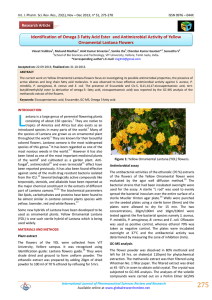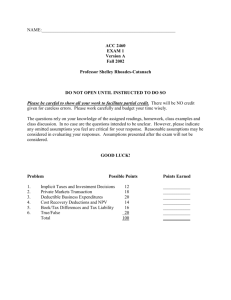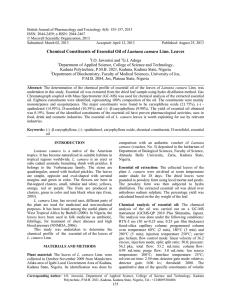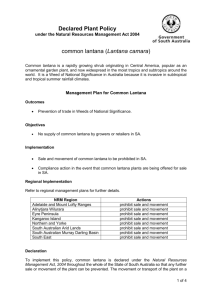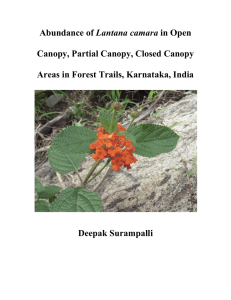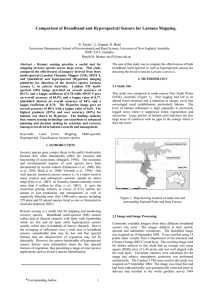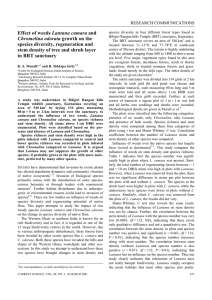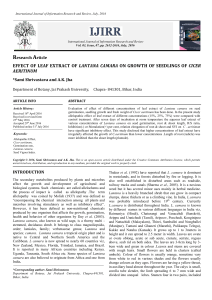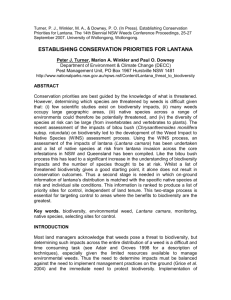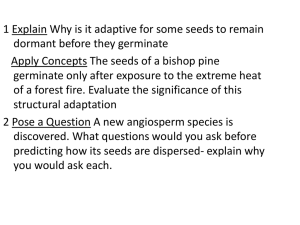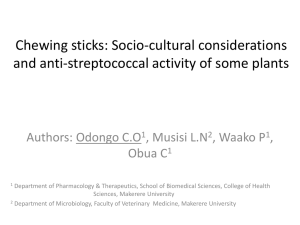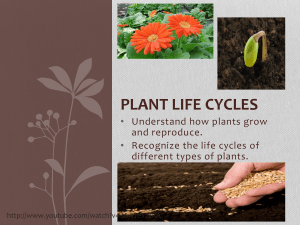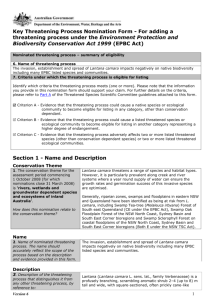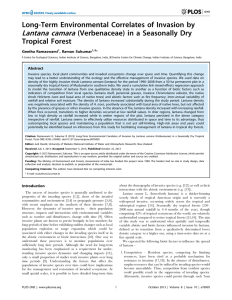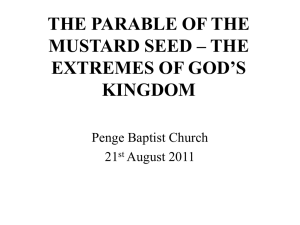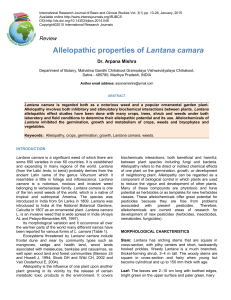Lantana Presentation
advertisement
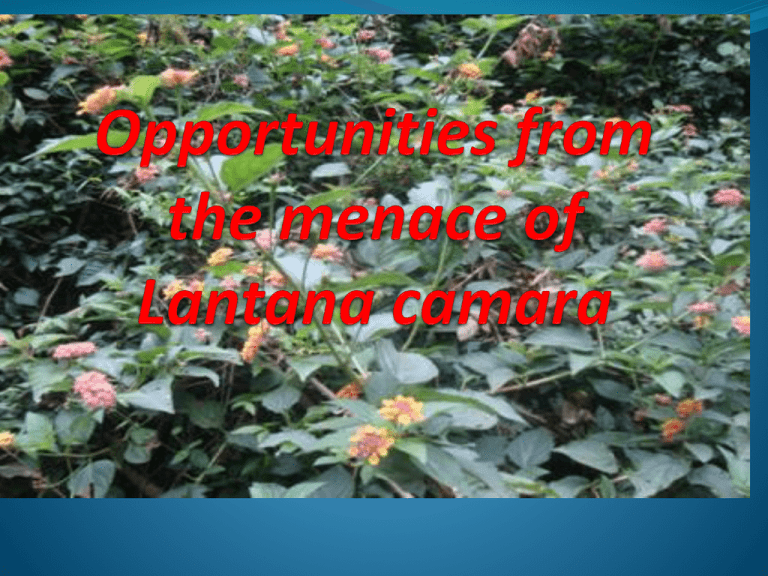
Description Lantana camara, also known as Spanish Flag or West Indian Lantana or LAVA, is a species of flowering plant in the verbena family, Verbenaceae that is native to American tropics (in parts of Mexico, Central America, the Caribbean and tropical South America) . It has been introduced into other parts of the world as an ornamental plant and is considered an invasive species in many tropical and subtropical areas. Notably Kenya has suffered other biological invasions in the past and Lantana camara was first introduced in the 1950s in the East African region and has had detrimental effects on the native biodiversity. •Lantana camara is a low, erect or subscandent, vigorous shrub which can grow to 2 - 4 meters in height. •The leaf is ovate or ovate oblong, 2 - 10 cm long and 2 - 6 cm wide, arranged in opposite pairs. Leaves are bright green, rough, finely hairy, with serrate margins and emit a pungent odour when crushed. •The stem in cultivated varieties is often non- thorny and in weedy varieties with recurved prickles. It is woody, square in cross section, hairy when young, cylindrical and up to 15 cm thick as it grows older. •Lantana is able to climb to 15 m with the support of other vegetation. •Flower heads contain 20 - 40 flowers, usually 2.5 cm across; the colour varies from white, cream or yellow to orange pink, purple and red. •The fruit is a greenish blue-black colour, 5 - 7 mm in diameter, drupaceous, shining, with two nutlets. Mature plants produce up to 12,000 seeds annually. Seed germination occurs when sufficient moisture is present; germination is reduced by low light conditions. •The root system is very strong with a main taproot and a mat of many shallow side roots. Seed dispersal. Lantana camara habit Lantana pictures from Ngong Forest •Fruit dispersal is through frugivorous birds and rodents. •Germination rate of fresh seed is generally low, but the germinability gets improved when the seed passes through the digestive system of birds and animals. •High light intensity and soil temperature will stimulate germination of seeds which means that clearing of forest areas, inappropriate burning and other disturbances will help spread of the weed. •Seeds are capable of surviving the hottest fire. •The plant has diverse and broad geographical distribution which is reflected by its wide ecological tolerance whereby it can occur in diverse habitats and on variety of soils. • However, it generally grows in open un-shaded conditions. •It doesn't grow at ambient temperatures below 5 degrees Celsius. The plant is found at altitudes from sea level to 2,000 m and can thrive very well under rainfall ranging from 750 to 5000 mm per annum. •Lantana usually does not invade intact rain forests, but is found on their margins. Where natural forests have been disturbed through logging creating gaps, Lantana encroaches in the gaps. Further logging aggravates the condition and allows lantana to spread or become thicker in its growth. Its leaves and flowers contain toxins, Lantadene A and B, and so it cannot be eaten by herbivores. Its puts out chemicals that inhibits/stunts the growth of other plants (allelopathic effect), and out-competes all other plants. Each plant puts out up to 12,000 seeds and each seed can remain dormant up to 11 years, and will germinate faster if exposed to smoke (from forest fires). They also germinate better if passed through the digestion tract of birds. If cut down, it puts out new shoots, which grow faster than before, and form dense, impenetrable thickets. If the roots are dug up, then many dormant seeds, when exposed in the disturbed soil, all germinate, increasing the density of lantana in the area. Lantana threatens natural habitats and native flora and fauna. As the density of Lantana increases in a forested area, the species richness decreases. The soil has a lower capacity to absorb water in dense stands of lantana than in grass cover, increasing run-off and therefore soil erosion. The plant, however, may reduce erosion in mountainous areas not previously covered by grass In Kenya it is mainly used as firewood especially in the rural areas that depend on wood as a source of energy. It is also planted as a hedge to keep away intruders. Studies have been done on the use of repellent plants and plant products against the main malaria vectors in eastern Africa.(Abebe, AkliluSeyoum (2003) PhD student Kenyatta University, Kenya). The study showed that Lantana camara among other plants represents a sustainable and readily applicable malaria vector control tool for incorporation into integrated vector management programs. Also tested in Western Kenya where they use both thermal expulsion and direct burning methods. Ornamental from its colourful flowers. Wasted and unusable pieces, along with other biomass can be burned to form charcoal. This can be mixed with manure and buried as biochar, greatly improving soil fertility and productivity. It is also a way of sequestering carbon, and a small step in the direction of combating climate change and global warming. Shola Trust in India in collaboration with other organizations has launched an initiative to help local indigenous people use the weed to make furniture. Their traditional artistic skills are used in modern context to generate income. Some of furnitures made using Lantana camara in India Thank you!!!

